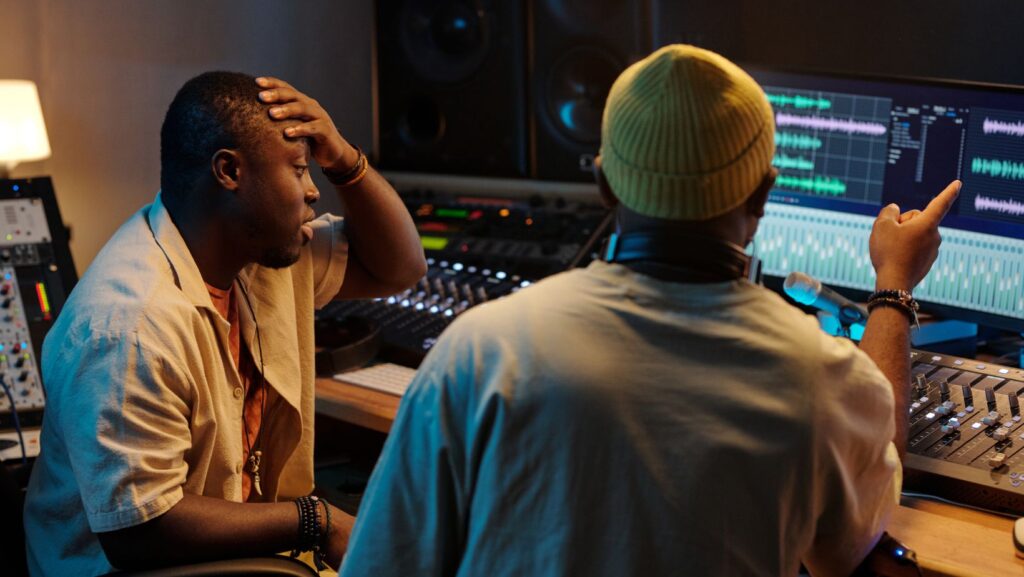
Creating music has never been more accessible than it is today. Thanks to artificial intelligence, anyone can compose and produce professional-sounding tracks without musical training or expensive equipment. This guide will walk you through the process of creating music online for free using AI tools, helping you transform your ideas into polished songs in minutes.
Understanding AI Music Generation
AI music generators use machine learning algorithms to analyze patterns from thousands of songs and create original compositions based on your input. These tools can generate melodycrafts, harmonies, rhythms, and even vocals that sound surprisingly human. The technology has advanced to the point where the quality rivals professionally produced tracks.
AI music tools typically offer various creation methods:
● Text-to-music: Describe what you want, and AI creates it
● Lyrics-to-song: Input lyrics to generate a complete song
● Style-based: Select genres and moods for instrumental tracks
● Voice cloning: Some tools can mimic specific vocal styles
The benefits of using AI music tools include:
● No musical knowledge required
● Instant results (most songs generate in under a minute)
● Royalty-free music you can use in projects
● Ability to customize and refine results
● Access to various genres and styles
Getting Started with AI Music Creation
Before diving into the creation process, it’s helpful to understand what you’ll need and how to prepare. The good news is that the requirements are minimal compared to traditional music production.
What You’ll Need
● A computer or smartphone with internet access
● A clear idea of what type of music you want to create
● Basic text descriptions or lyrics (if applicable)
● Headphones or speakers to evaluate your creation
Preparation Tips
● Research different genres to understand their characteristics
● Collect reference tracks that inspire you
● Write down descriptive terms for your desired sound
● Prepare lyrics if you want a vocal track
Setting Expectations
● AI tools work best with clear, specific instructions
● You may need several attempts to get your ideal result
● Free versions often have limitations on song length or quality
● The more detailed your input, the better the output
Step-by-Step Guide to Create Music Online for Free Using AI Tools
Follow these steps to create your first AI-generated song. We’ll use melodycraft.ai as an example throughout this guide, though the process is similar across many AI music platforms.
Step 1: Choose the Right AI Music Generator
Start by selecting an AI music tool that meets your needs. Look for platforms that offer free tiers with reasonable capabilities. melodycraft.ai provides an excellent free option for beginners, allowing you to create short compositions without signing up. Other popular free options include Soundraw, Mubert, and AIVA.
What to Look For in an AI Music Generator:
● Free tier with minimal limitations
● Intuitive interface for beginners
● Variety of genres and styles
● Clear licensing terms for created music
● Export options in common formats (MP3, WAV)
Explore AI Music Tools
Step 2: Select Your Creation Method
Most AI music platforms offer multiple ways to generate music. On melodycraft.ai, you’ll find options like “Text to Song,” “Lyrics to Song,” and “Instrumental.” Choose the method that best suits your project:
Text to Song
Describe the mood, genre, instruments, and other characteristics you want in your track. For example: “Create an upbeat pop song with piano, electronic beats, and a catchy chorus.”
Lyrics to Song
Input your own lyrics, and the AI will generate a melodycraft.ai and arrangement to match the emotional tone and rhythm of your words.
Instrumental
Generate music without vocals by specifying genres, moods, and instruments. This is perfect for background music or projects that don’t require lyrics.
Reference-Based
Some platforms allow you to upload a reference track to inspire the AI’s creation while ensuring the output remains original.
Try Different Creation Methods
Step 3: Customize Your Music Parameters
After selecting your creation method, you’ll need to set specific parameters to guide the AI. The more detailed your instructions, the better your results will be. Here are key parameters to consider:
Genre & Style
● Select primary genre (pop, rock, jazz, etc.)
● Specify sub-genres for more precision
● Combine styles for unique sounds
Mood & Energy
● Define the emotional tone (happy, sad, intense)
● Set energy level (calm, moderate, energetic)
● Specify atmosphere (dreamy, dark, uplifting)
Instruments & Structure
● List desired instruments
● Specify tempo (BPM)
● Set song length (if customizable)
● Define structure (verse-chorus pattern)
Pro Tip: When using melodycraft.ai, try combining specific technical terms with emotional descriptors. For example, instead of just “happy song,” try “upbeat pop track with synth arpeggios, driving drums, and an optimistic, summer vibe.”
Customize Your Track
Step 4: Generate Your Music
Once you’ve set all parameters, it’s time to generate your track. This process typically takes anywhere from a few seconds to a minute, depending on the platform and complexity of your request.
During Generation:
● The AI analyzes your inputs and references its training data
● It composes a unique piece based on your specifications
● Some platforms like melodycraft.ai allow you to see the generation process in real-time
After Generation:
● Listen to your track completely
● Take notes on elements you like and dislike
● Consider if it matches your original vision
Generate Your First Track
Step 5: Refine and Edit Your Creation
Your first generation might not be perfect, and that’s normal. Most AI music tools allow for refinement through regeneration or editing. Here’s how to improve your track:
Regeneration Approach
● Adjust your input parameters based on what you heard
● Be more specific about elements you want to change
● Try different genre combinations
● Generate multiple versions to compare
Editing Features (When Available)
● Adjust tempo or key
● Modify instrument volumes
● Extend or shorten sections
● Add or remove instruments
● Change vocal characteristics
Remember: Free versions of AI music tools often have limited editing capabilities. If you need more control, platforms like melodycraft.ai offer affordable upgrades with advanced editing features.
Refine Your Creation
Step 6: Export and Use Your Music
Once you’re satisfied with your creation, it’s time to export it for use in your projects. Most free AI music generators allow basic exports with some limitations.
Common Export Options:
● MP3 format (most common for free tiers)
● WAV format (sometimes available in free versions)
● Full track export (vs. watermarked versions)
● Stem separation (usually a premium feature)
Understanding Usage Rights:
Before using your AI-generated music, understand the licensing terms. Most platforms offer:
● Personal use rights (free tier)
● Commercial rights (often requires paid subscription)
● Royalty-free status (no ongoing payments)
Export Your Creation
Tips and Tricks for Better AI Music Creation
Maximize your results with these proven strategies for working with AI music generators:
Be Specific and Descriptive
The more detailed your prompts, the better your results. Instead of “happy song,” try “upbeat pop track with bright piano, driving drums, and an optimistic summer vibe at 120 BPM.”
Learn Music Terminology
Familiarize yourself with basic music terms like tempo (BPM), key signatures, and instrument names to communicate more effectively with the AI.
Generate Multiple Versions
Create several variations of your track with slightly different parameters, then choose the best elements from each or select your favorite overall.
Study Reference Tracks
Listen to songs in your target genre and identify specific elements you want to incorporate. Reference these in your prompts for more accurate results.
Combine Multiple Tools
Use different AI platforms for different aspects of your music. For example, use one for composition and another for vocals or mixing.
Save Your Successful Prompts
Keep a record of prompts that produced good results so you can build on them for future projects.
Understanding the Limitations of Free AI Music Tools
While free AI music generators offer incredible capabilities, it’s important to understand their limitations:
What Free Tools Do Well
● Generate complete, listenable tracks
● Provide access to multiple genres and styles
● Create original compositions quickly
● Offer basic customization options
● Allow for personal use projects
Common Limitations
● Restricted song length (often 30-60 seconds)
● Limited export formats
● Watermarked audio in some cases
● Fewer editing capabilities
● Restricted commercial usage rights
● Generation quotas (limited tracks per day)
When you need more advanced features, consider platforms like melodycraft.ai that offer affordable upgrades with extended capabilities while still maintaining an accessible entry point for beginners.
Creative Use Cases for AI-Generated Music
AI-generated music can serve numerous purposes across different projects. Here are some popular applications:
Content Creation
● YouTube video background music
● Podcast intros and outros
● Social media content enhancement
● Streaming background music
Creative Projects
● Independent film soundtracks
● Game development audio
● Art installation soundscapes
● Theater production music
Personal Use
● Custom birthday or event songs
● Meditation and relaxation tracks
● Workout playlists
● Learning music composition
Conclusion: Your Journey into AI Music Creation
Creating music online for free using AI tools has revolutionized the creative landscape, making music production accessible to everyone regardless of musical training or budget constraints. By following the steps outlined in this guide and experimenting with platforms like melodycraft.ai, you can produce professional-sounding tracks for your projects in minutes rather than months.
Remember that AI music generation is a rapidly evolving field, with new features and capabilities emerging regularly. The best way to master these tools is through consistent experimentation and practice. Start with simple projects, learn from each creation, and gradually tackle more complex musical ideas as your confidence grows.
Ready to Create Your First AI-Generated Track?
Start your music creation journey today with free AI music tools. No musical experience required – just your creativity and ideas.
Get Started Now















